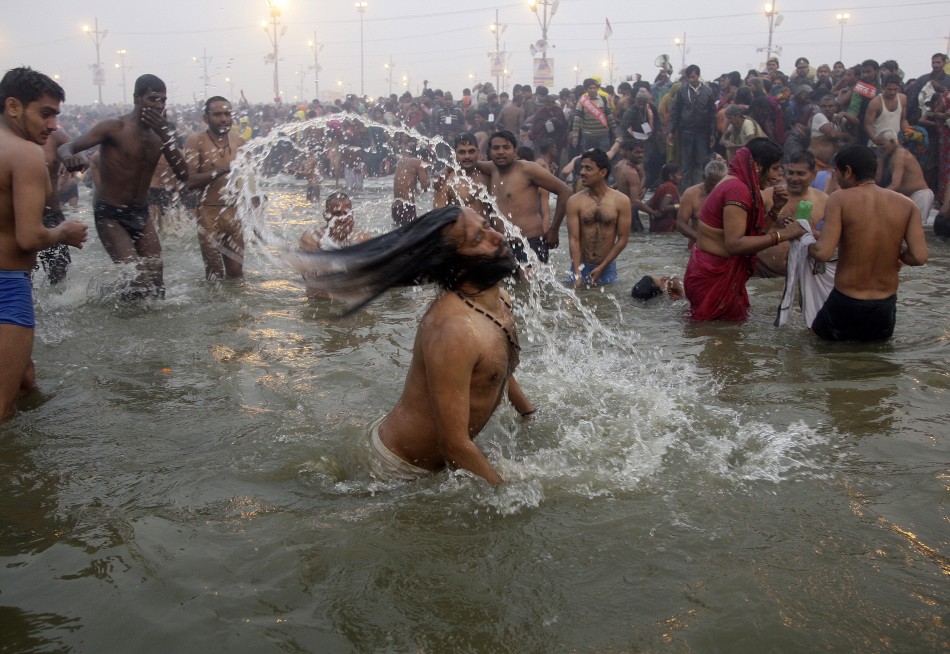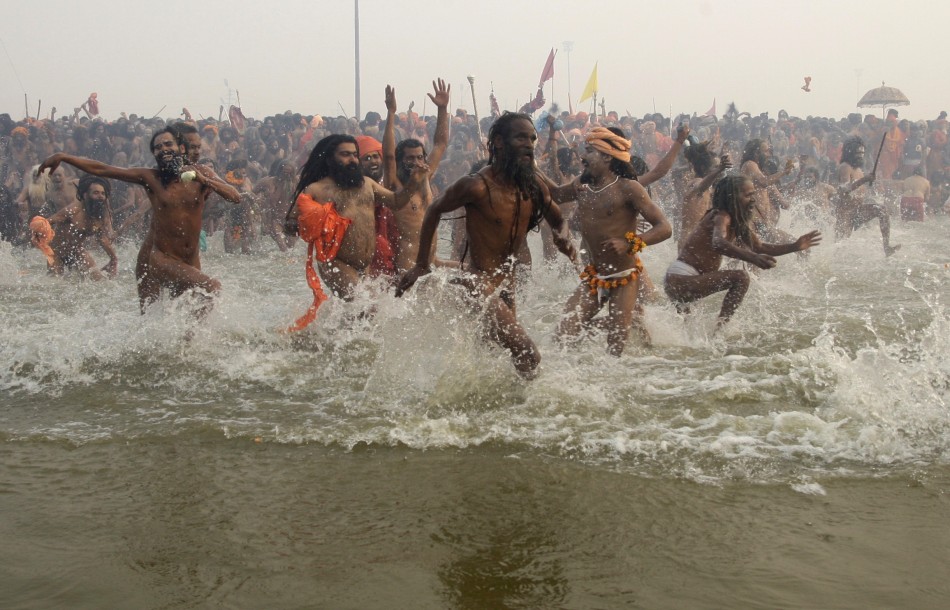India’s Kumbh Mela Festival: 100 Million People Swim in Ganges [PHOTOS]
Hindu holy celebration in Allahabad for 2013 is world’s largest religious gathering

About three million people took a dip in the waters of India's holy rivers on the first day of the Hindu Kumbh Mela festival, according to authorities.
Fifty thousand policemen were on standby as Hindu holymen - Naga sadhus - naked ascetics and Hindu believers washed away their sins at the confluence of the Ganges, the Yamuna and the mythical Saraswati rivers near the town of Allahabad in northeast India.
The festival is the world's largest religious gathering and last 55 days. About 100 million people are expected to attend.
According to Hindu mythology, when gods and demons fought over a pitcher of nectar believed to give immortality, a few drops fell in the cities of Allahabad, Nasik, Ujjain and Haridwar.
The Kumbh Mela is held in one of these towns each year, depending on astrological calculations.
Hindus believe that a dip in the holy waters on one of the few auspicious days decided by the alignment of stars purifies the soul from all the sins committed in current and past lives and frees it from the cycle of death and rebirth.
Known as Maha Kumbh, the 2013 Kumbh Mela is the most important of the three types of Kumbh festivals celebrated by Hindus.
To take a dip in the Ganges in a period as auspicious as the present, you will have to wait until 2157.
The most common Kumbh Mela is known as ardh (or half) kumbh and is held every six years.
Every 12 years, the cities of Allahabad, Nasik, Ujjain and Haridwar open their doors for the purna (full) kumbh celebrations instead.
The Maha Kumbh is held every 12 purna (full) kumbh - 144 years - only in Allahabad.










© Copyright IBTimes 2025. All rights reserved.






















